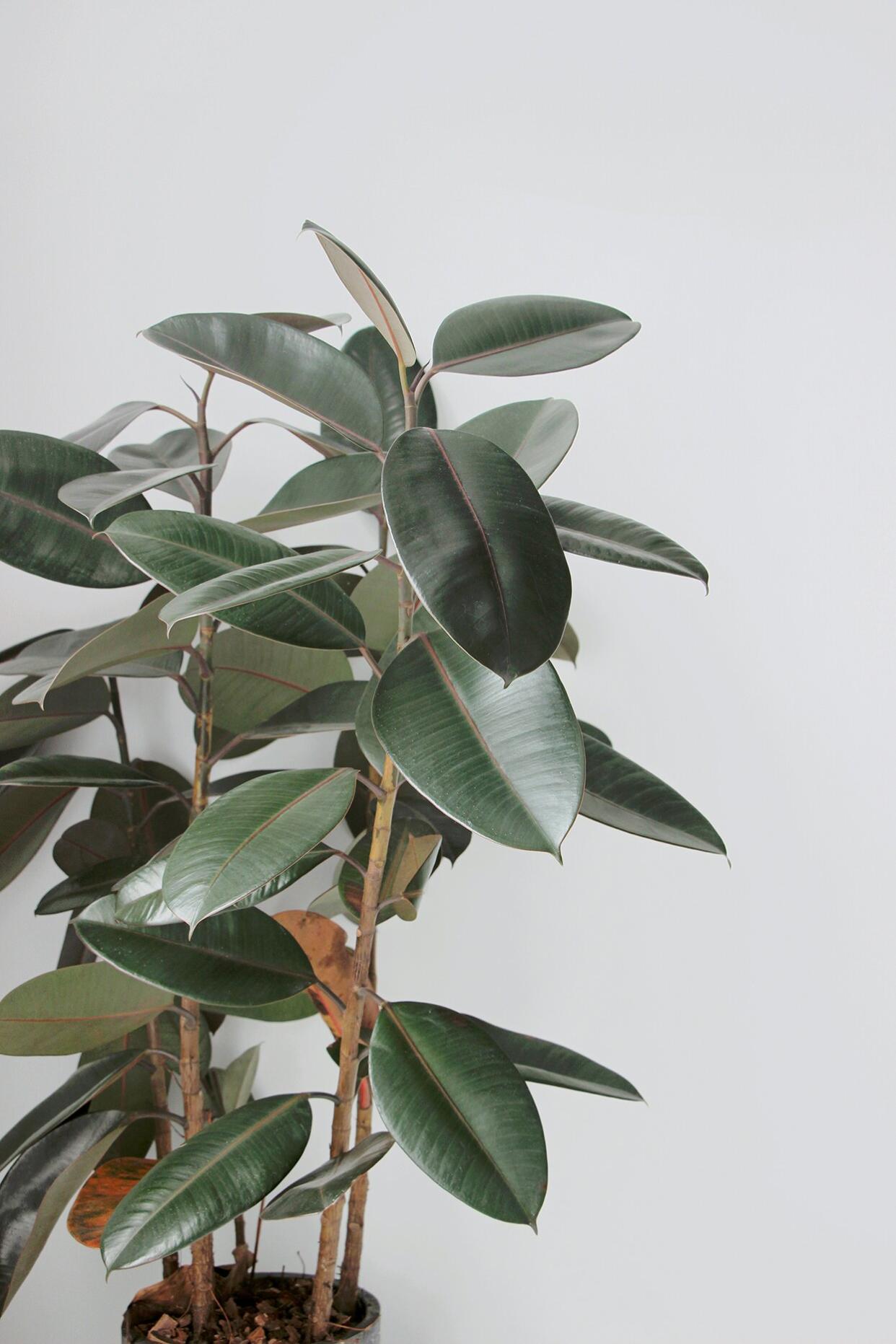How to Grow and Care for Ficus Elastica, Also Known as the Rubber Plant

Getty / CCeliaPhoto
The Ficus elastica, also known as a rubber plant or rubber fig plant, can easily be identified by its lush green leaves that come to a fine point. The leaves have a rich, waxy looking sheen to them and provide ongoing color wherever you choose to show yours off. And show it off you will with these expert tips.
Related: Eight Houseplants That Thrive in Low Light
All About Ficus Elastica
The wildly popular houseplant is evergreen in nature and adds year-round color and interest to homes and offices where they are displayed. "Though able to reach heights over 100 feet when grown in their native range, indoor rubber trees will be content to maintain much more manageable sizes, usually up to about 10 feet," according to Tonya Barnett, YouTube creator with FRESHCUTKY Cut Flower & Vegetable Garden. The plants, which get their name from their response to cutting and damage, secrete a thick milky sap which was once used to produce a rubber-like substance. "Compounds within the sap are known to cause skin irritation and may even trigger those with latex allergies," Barnett warns.
Toxic Traits
According to Paul Sangha, landscape architect and founder of Paul Sangha Creative, this species is especially toxic to cats, dogs, and horses. Additionally, the white sap produced by broken leaves and branches can cause mild irritation and allergic reactions in both children and adults alike. "Efforts should be taken to place plants out of reach or elevated in containers," Sangha explains.
Growing and Caring for Rubber Plants
Rubber trees are fairly easy to grow, which is one of the reasons that they make such great houseplants. As long as you are meeting all of their light, moisture, and fertilizer requirements, your rubber plant will thrive indoors. "While they can survive under low light conditions, this often leads to leaf drop and increased stress," says Barnett. "Too much direct sunlight can also be detrimental to the overall health of the plant." She suggests placing them in a location with bright indirect light for most of the day. You'll also want to keep soil moist but avoid overwatering as it can lead to the development of various diseases or even cause root rot. "Additional misting of leaves may also be needed throughout winter when indoor humidity is especially low," adds Barnett.
Fertilizing Your Plants
According to Clemson University's Home and Garden Information Center, it's important to fertilize regularly with a water-soluble houseplant fertilizer during active growth in the warmer months. This should be done every two weeks—unless plants are growing in lower light, then they should be fertilized less frequently.
If you're looking to give your rubber tree a boost during the growing season, Sangha suggests doing so with a regular monthly fertilizer during the spring and fall with a half-diluted indoor plant fertilizer in either liquid or slow-release form.
Seed Starting and Propagating
The rubber plant may be native to Southeast Asia, but you can find one for your home in most places where houseplants are sold. "Although rubber fig trees are typically easy to find at your local nursery, plant enthusiasts may want to propagate their own," Sangha says. "This can be done using cuttings or air layering techniques along with rooting hormones to stimulate root growth."
Though it is possible to propagate rubber plants through cuttings, it is also possible to grow from seed. Barnett says that this process will require some research and patience. "Since rubber plants seldom set seed indoors, hopeful growers should make certain to obtain [seeds] only from reputable sources," she says, adding that this will help to ensure that newly produced plants are disease-free and true to type.

